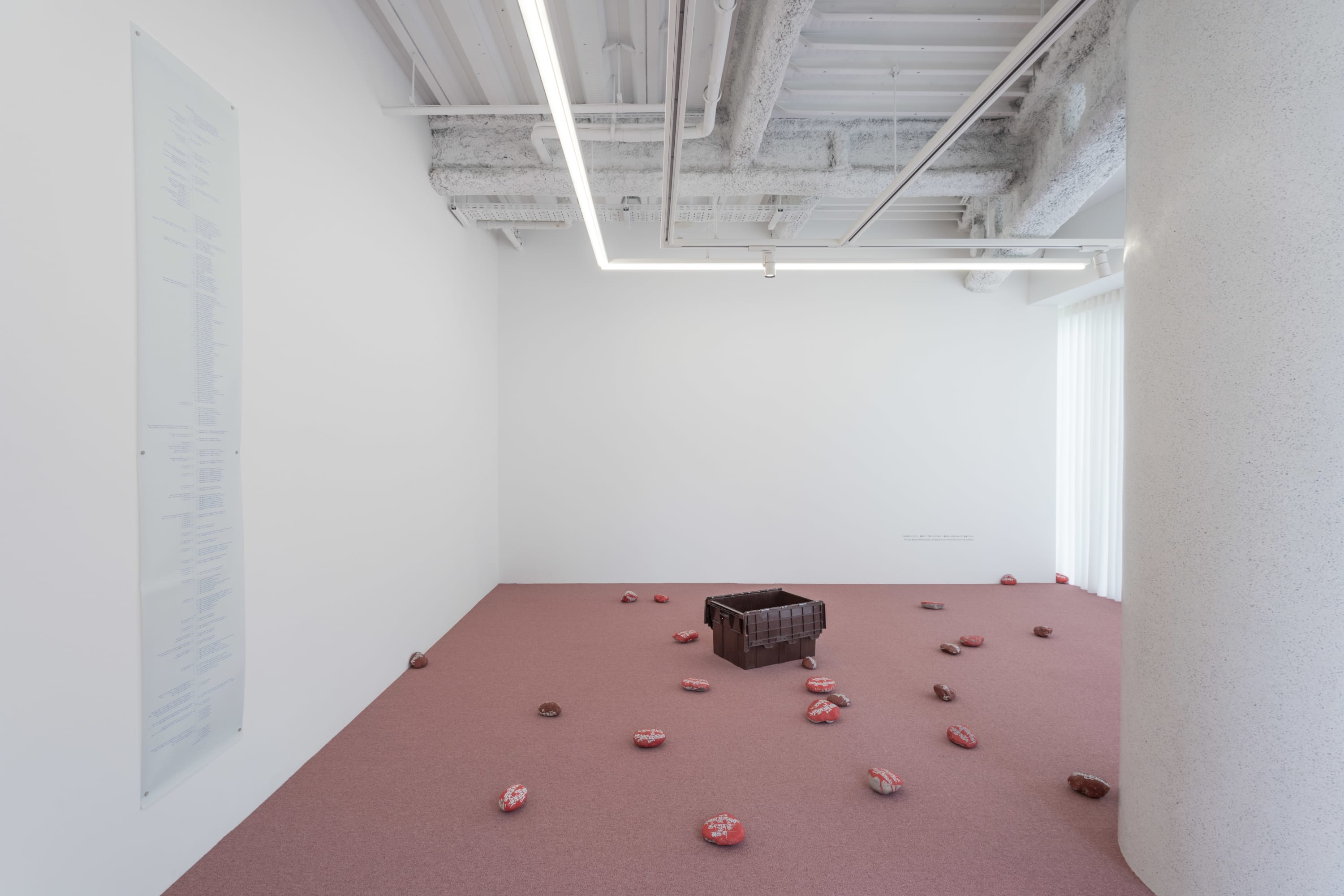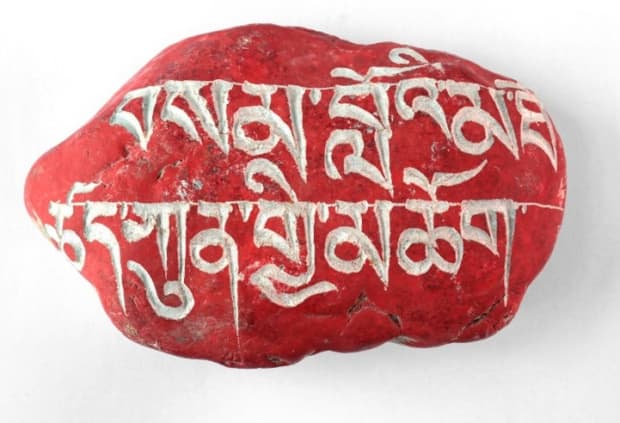-
 Installation view: 'IT’S ORDINARY, BUT…' OTA FINE ARTS 7CHOME, Tokyo, 2025, Photo by Kanichi Kanegae
Installation view: 'IT’S ORDINARY, BUT…' OTA FINE ARTS 7CHOME, Tokyo, 2025, Photo by Kanichi KanegaeThe work Spirit Above All presented at 7CHOME belongs to a long-term project initiated in 2017 and is still ongoing today. Zhao Yao has expressed his intention to continue this project over time. The starting point of the work lies in the culture of the mani stone, a long-standing tradition in the Tibetan region. Local artisans carve Buddhist scriptures and prayers onto stones dyed with red pigment at the request of devotees. These stones, known as mani stones, serve both as acts of prayer—for health, success, and other wishes—and as means of accumulating virtue. The act of carving sutras into stone is thus regarded as a practice of accumulating time and faith, two concepts that also form the core of Zhao’s work.
On the gallery wall, a blueprint of the project’s production timeline is displayed. By following these records, viewers can sense how the act of “engraving” gradually expanded into a daily engagement with time itself.
-

A stone from the series 'Spirit Above All'
-
When Zhao first began this project in 2017, his interest lay in the very act of inscribing the phrase into stone. Without any intention of exhibition or presentation, he continued to carve the same words over and over. The carving is executed by a Tibetan craftsman named Caiga, who has long produced mani stones. At first, he occasionally engraved actual Buddhist sutras by habit—yet even such “errors” were accepted as part of the process and duly recorded in the project timeline.
Although each stone is produced through the same phrase, material, and process, subtle variations emerge. These nuances evoke the minor shifts and changes we experience through the repetition of our own daily lives. Considering this repeated act over a long stretch of time becomes, in itself, a source of the work’s vitality. Zhao likens this process to “writing an essay”: the repeated inscription of a single phrase resembles meditation or prayer. Viewers, too, are invited to touch or turn over the stones, quietly contemplating their own time and experience.
-
The most essential element of this project is its timeline, which accumulates every event and record since 2017. Throughout the process, Caiga sends Zhao photographs and videos of his process, along with the surrounding landscapes, sounds, and local situations. All of these have been integrated into the timeline. What began as a personal, diary-like record has deepened over time. When Caiga’s son passed away, he walked the mountains of mani stones in prayer—a moment also recorded as part of the work. Thus, the project evolved from the simple inscription of words into an act of layering accumulations of time and memory.
-
 23 January 2020, "Something in the Air" at the Kaze Village in Nangqian County, Yushu Prefecture, Qinghai Province.
23 January 2020, "Something in the Air" at the Kaze Village in Nangqian County, Yushu Prefecture, Qinghai Province.In 2020, Zhao carried these stones to the summit of Mount Tai—one of China’s Five Sacred Mountains—and later placed others upon different peaks. In encounters with those interested in Tibetan culture and Buddhism, the stones were also handed to individuals who brought them to new locations. Each of these moments was documented as part of the project’s expanding record.
The project also extends conceptually into Something in the Air (2019), which magnifies the motif of a rounded stone one million times into a large balloon-like installation enclosing air, visualizing the formless energy of spirit.
-
 Installation view: 'IT’S ORDINARY, BUT…' OTA FINE ARTS 7CHOME, Tokyo, 2025, Photo by Kanichi Kanegae
Installation view: 'IT’S ORDINARY, BUT…' OTA FINE ARTS 7CHOME, Tokyo, 2025, Photo by Kanichi KanegaeFurther, the project includes two files, RGB-1 and RGB-2. RGB-1 compiles colour data from all the red stones created by Zhao, while RGB-2 records the colour data from traditional mani stones made by local artisans. For both files, the surface colours of the stones were measured with precision instruments, and the extracted RGB codes were printed one by one using rubber stamps—a painstakingly delicate process.
In this exhibition, the two files are displayed open on a shelf, inviting viewers to turn their pages. Additionally, 7.5 cm square prints derived from these files are scattered across the floor of the Piramide Building gallery. When entered into colour-conversion systems, each code reproduces a subtly different tone of “red,” evoking the minute variations that lie within everyday repetition.
On the final page of the file appears the phrase “精臻紅 (Jingzhenhong),” the title of an artificial red pigment developed by Nippon Paint based on their “Impression of Tibet.” In Chinese, jingzhen means “to concentrate one’s spirit” or “to select carefully,” and this red serves as a symbolic color uniting the entire project.





